Maybe I've been under a rock for the last five decades, but when I saw this safety pin on a clothing tag, I was flabbergasted. I had never seen such a pin. Someone had tinkered with Walter Hunt's design, patented in April 1849 and pretty much unchanged since then, and made it - better. It felt like someone had taken on the sacred.
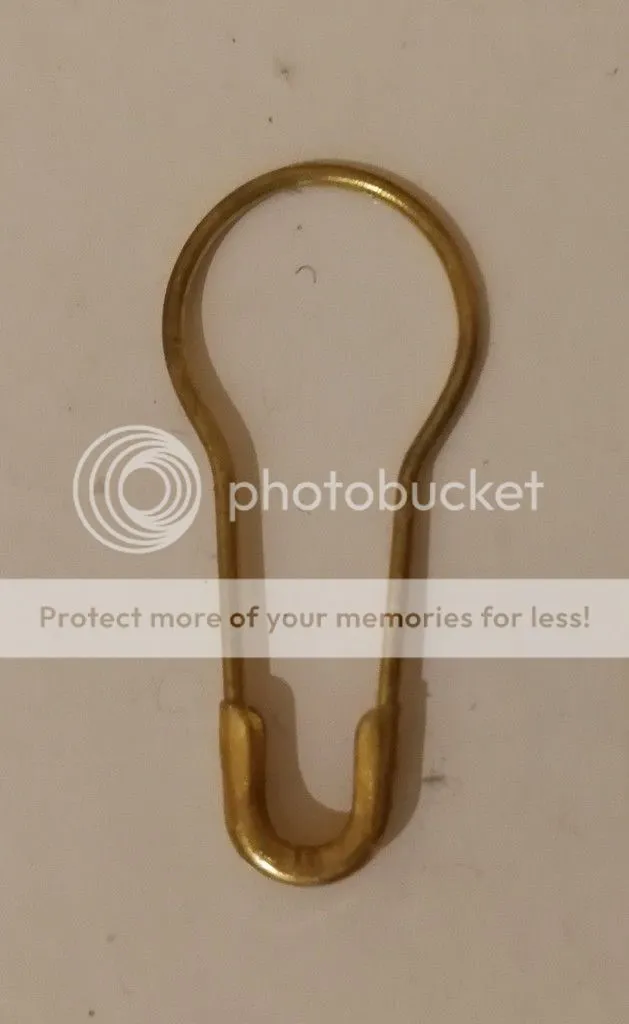
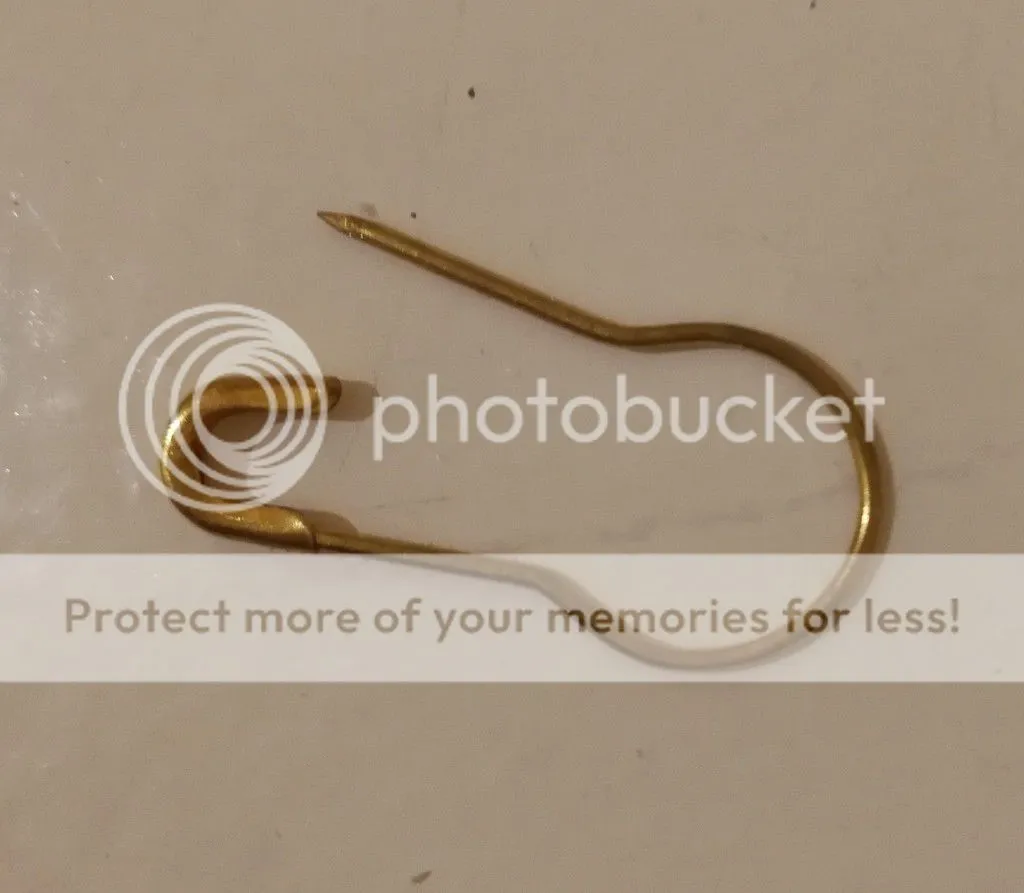
So it got me thinking...
...which as we know is potentially dangerous. However, this time around I think the world is safe from my musings.
Could it be that we accept things are the way they are because that's the best they can be, and we intuitively recognise they are in their optimal state because of their simplicity and elegance? Or is it because nobody has had the inspiration to think differently about the simple things which surround us? And have we not improved them because we are so used to the way they are?
A brief history of the safety pin
Humble beginnings
Ah, Wikipedia, you beauty. Thanks to you I learned that the invention of the safety pin was a "needs must" exercise - that Walter Hunt fellow owed someone $15 and was flat broke himself. He sold his design for $400 to W. R. Grace and Company and paid off the $15 debt, making a handsome profit of $385 in the bargain. Too bad for him, I suppose, the company he sold the design to must have made millions of dollars from the subsequent sale of safety pins. But how was he to know? And could he have possibly realised how ubiquitous his invention would become? And maybe he really needed to repay that debt at the time.
Safety pin as covert social agent
This delightful tribute to the safety pin in the usually pretty highbrow magazine The Atlantic raises it from the simply functional to a way of triggering childhood memories, and captures the times in society when it actually became a symbol of protest. Living in South Africa, I wasn't aware that in late 2016 people in the US began wearing safety pins as a way of expressing their outrage at what was happening post-election. I do remember that safety pins were an essential element in any self-respecting punk rocker's wardrobe, holding pants, t-shirts and body parts together. So safety pins as a means of social expression - really? Yes, really.
Variations on the safety pin over the years
To be charitable, let's call those variations slight. Safety pins have barely changed at all over the centuries. Until this baby pin came along, nobody seems to have really messed with the basic design. Sure, they've produced larger, more decorative pins such as this one I used to have on a kilt I wore as a child.
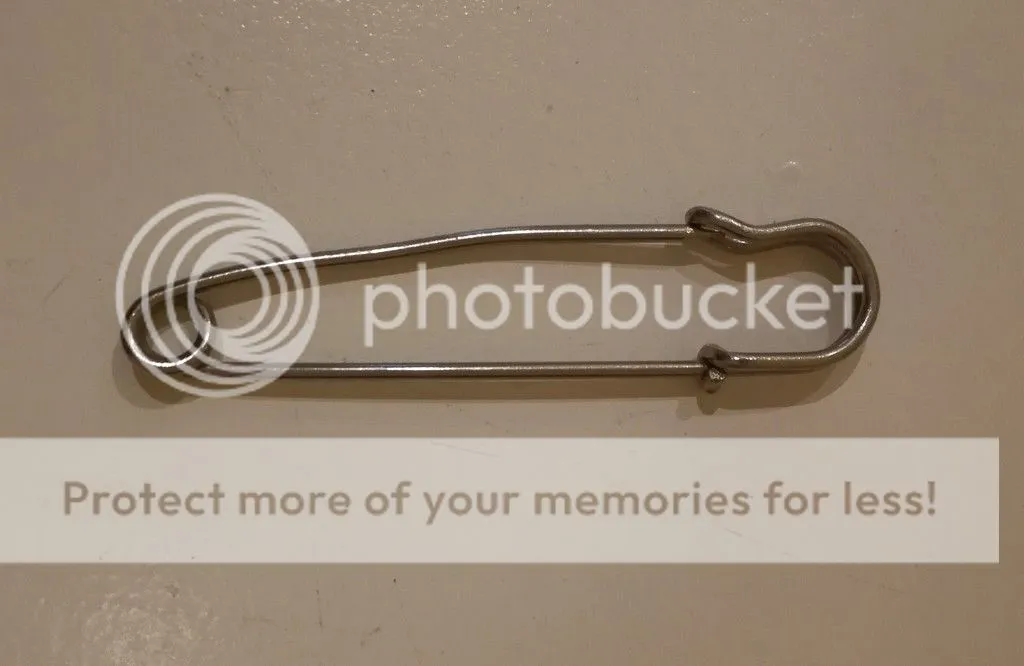
Please don't ask why I've kept it all these years. I have no idea, other than it's nifty.
Other changes are more about colour, size (oversized and smaller) and and design material (say brass rather than steel). I always felt special as a child having one of those small brass safety pins. Somehow they felt more sophisticated than regular safety pins. To think they now come in colours, red to boot!
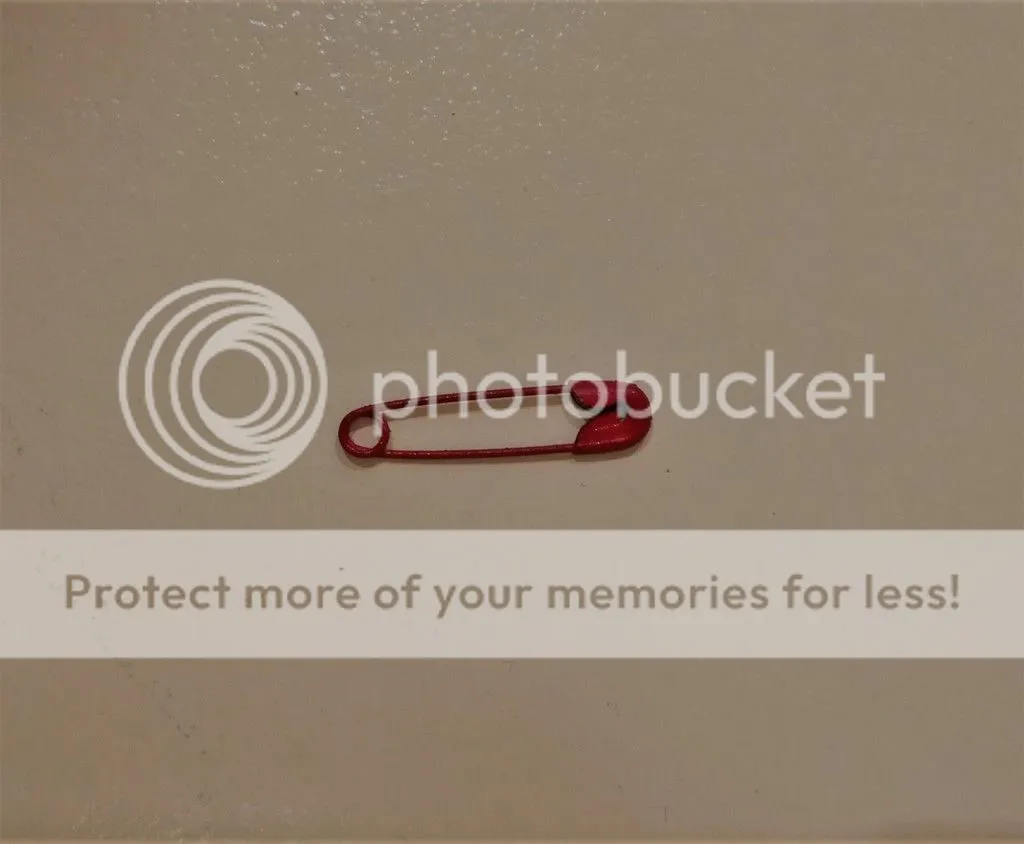
Just for fun, I've thrown in the dry cleaner's special. I have no idea why, but they insist on attaching wool to the safety pins they use to attach the label to the clean item of clothing. Like I might miss the pin if it didn't have this bright wool on? It must at least keep someone employed tying the wool on....
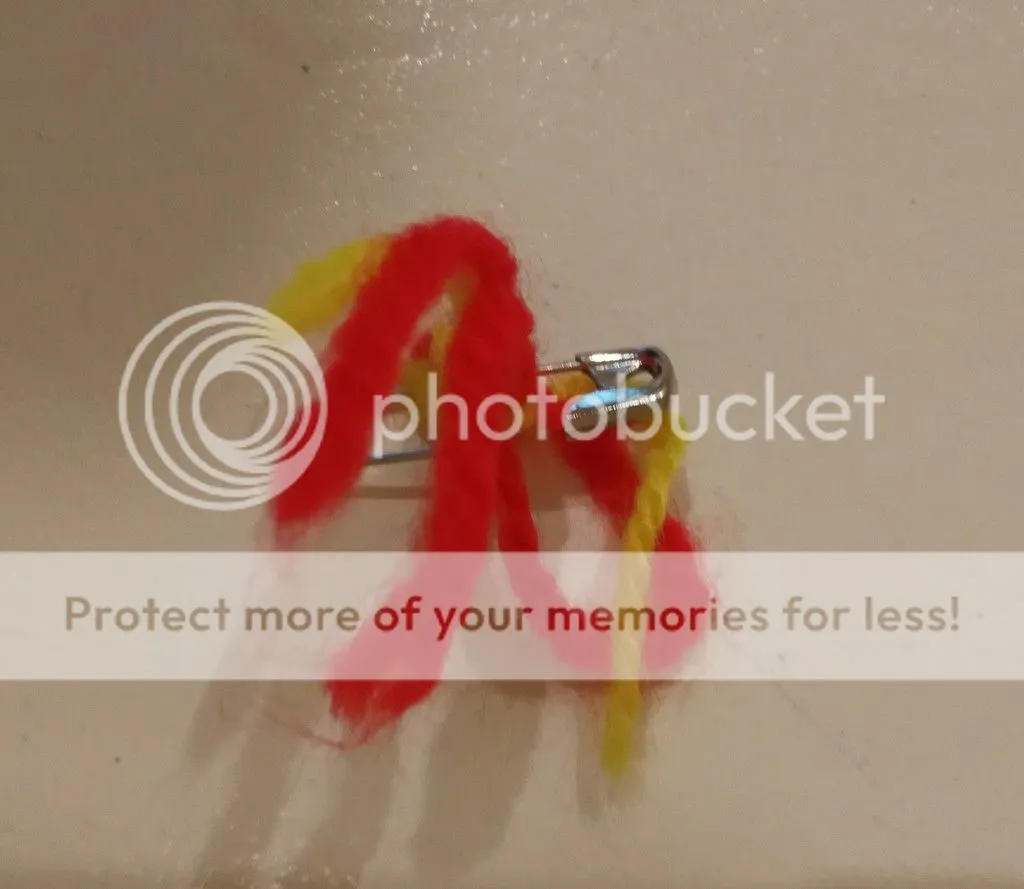
To give you an idea of scale of these pins, I've put them together:
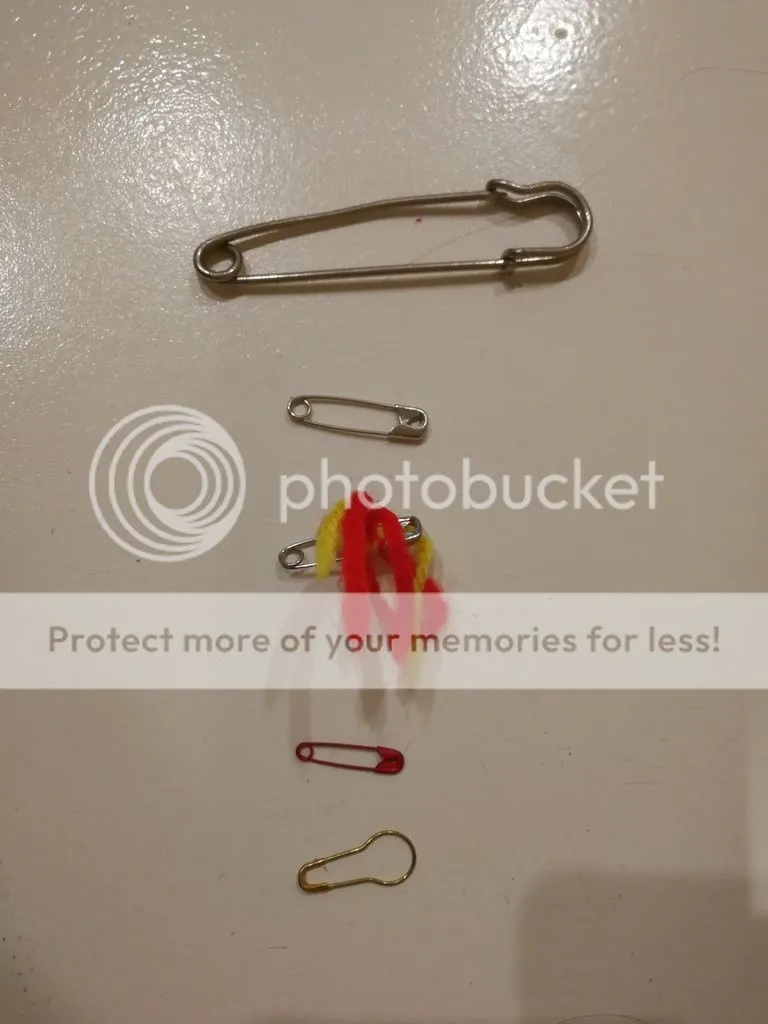
And now someone's gone and changed it
Who would mess with safety pin perfection? What inspired them? Why isn't their name in the Wikipedia article along with Hunt's? The elimination of the spring mechanism to create the baby pin is an innovation of note.

Oh yeah, it also looks like a two-dimensional light bulb. Maybe a light bulb inspired the inventor of the baby pin!
There's more to this change than meets the eye
For the purposes of comparing the two, let's call the baby pin "SimplePin" and the Hunt design "OriginalPin". Here are a couple of thoughts, IMHO, on why SimplePin may be much better than OriginalPin.
Without measuring it, it looks like SimplePin uses about half to three quarters of the metal of a standard safety pin because it doesn't need that length to go into the bend or have as robust a sheath as OriginalPin. Tick on cost and the environment (Natural, Manufactured and Financial Capital) each getting a boost here.
Not only that, but without the need to turn the steel or brass into a spring shape, rather a single bend, it should take less energy to manufacture. The simpler sheath design also should be easier and less energy intensive to manufacture. It might also be faster, but I'm not a manufacturing expert - just thinking logically that if there's less to do it should take less time.
SimplePin serves the same function as OriginalPin, arguably easier for the user as well. Ever tried to do a safety pin up when attaching a banner to your t-shirt just before a race? Admit it - sometimes it's tricky getting that pin to slide into the sheath, particularly if the sheath is a bit compressed from the vagaries of safety pin life, but the spring still has plenty of spring in it. Those suckers fight back, often at the expense of a sensitive fingertip. And I would also argue that the finicky spring and sheath elements attract trouble - how often have you had a piece of what you were trying to pin get stuck in either of those bits? Well, SimplePin just doesn't have as many sticky bits as OriginalPin. No spring, no cry. No sheath, no pain.
For a design that's been around for over two centuries, frankly, it's overcomplicated for the purpose. While a safety pin can live for decades and there's no good reason why they shouldn't live for centuries, let's face it, a single pin probably doesn't work that hard in its individual life. That spring mechanism is more complex to manufacture than the baby pin mechanism. The saving in manufacturing costs over millions of units over decades of production could mean the baby pin might be doing its own bit to take us into the New Energy Economy. I'm not going to touch the idea that maybe we don't need to manufacture any more anyway as there must be billions of them already weighing down the planet and a bit of an effort to collect them worldwide would go a long way. (I can already hear the Swedes diplomatically pointing out that they started recycling theirs decades ago - at least I assume they did, as that country is now a net importer of waste - but we're not all as organised as the Swedes.)
If anyone out there in Steemit Land knows who came up with the baby pin and what inspired them to invent it, please share with the rest of us. They might have just been trying to save some money, or maybe their bending machine was on the fritz and they had to make a plan, but I'm guessing (in what I trust is a pretty educated way) that they've achieved more than just saving money with their simple but fundamental design change. They would have reduced consumption of metals, reduced production energy costs and also improved the user experience. Sounds like a sustainability improvement to me.
Faster horses?
I'm reminded in a backwards way of the kick-in-the-butt non Henry Ford quote (non, because apparently there is no evidence he actually said it on how he came up with the idea for cars in the first place - "If I'd asked people what they wanted, they would have said faster horses." Maybe the baby pin is the equivalent of a faster horse, not a revolutionary shift in moving people around like the invention of the automobile. But it's an improvement nevertheless.
What other "safety pins" and "faster horses" do we have in our lives? Things which are useful, we use all the time and which we've grown used to because they've always been "like this", but maybe could be improved in a way that helps the planet and improves the user experience?